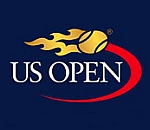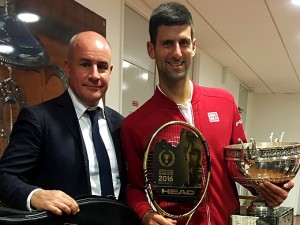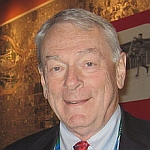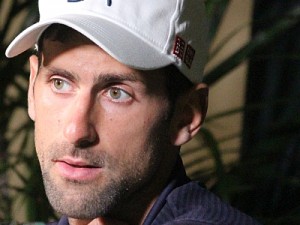Notice: Undefined variable: page_title in /home/tennisne/public_html/wp-content/themes/dante-child/single.php on line 205
Copyright © 2016. No duplication is permitted without permission from Bob Larson Tennis.
Australian Open
Do you ever find yourself wishing there were someone other than Novak Djokovic to talk about as a big tournament comes up? Even world #2 Andy Murray has expressed a hope that, if Djokovic has an off day, it will come against him.
Which, if you think about it, isn’t really needed. As long as Djokovic has a truly off day against anyone, then Murray will have his shot at winning Melbourne. But how many off days does Djokovic have, any more, and how many players have the game to beat even a not-quite-all-there Djokovic?
It’s perhaps a little interesting to note that the first seed Djokovic could face is #28 Andreas Seppi, who shocked Roger Federer last year. But, overall, it’s not a bad draw for Djokovic — Hyeon Chung, then probably Ivan Dodig, then Seppi, then #14 Gilles Sinom or #22 Ivo Karlovic or perhaps Jiri Vesely or Vasek Pospisil, then #7 Kei Nishikori or #9 Jo-Wilfried Tsonga or #17 Benoit Paire or #26 Guillermo Garcia-Lopez. Former finalist Marcos Baghdatis is also in that quarter, as is Philipp Kohlschreiber, but it really feels as if it will take a very out-of-form Djokovic to lose before the semifinal. In the semifinal, though, he faces #3 seed Roger Federer or #6 Tomas Berdych, and Federer is of course the only player to have beaten Djokovic more than once in the last year (in fact, Federer handed Djokovic three of his five total defeats, so even though he’s #3, he’s clearly the player who is the greatest threat to Djokovic in specific).
#2 seed Murray’s early rounds are, if anything, even softer than Djokovic’s — he opens against Alexander Zverev. The first seed he could face is #32 Joao Sousa, whose only victory over a Top Ten player was over David Ferrer at Kuala Lumpur 2013. Then comes #16 Bernard Tomic, who supposedly is sick; or #20 Fabio Fognini, whose temper is probably more a threat to himself than to his opponents; or if those two melt down, then perhaps Gilles Muller — whose big deliveries, however, are hardly a match for Murray’s returns. We also note that long-injured Brian Baker will try to make a comeback in that section. It’s also interesting that Fognini could face Simone Bolelli, with whom he won the doubles here last year, in the third round.
Assuming Murray gets through all that, he’s supposed to face #8 David Ferrer in the quarterfinal — but Ferrer hasn’t looked too good lately. But then, #11 John Isner hasn’t been spectacular so far in 2016, either, nor #18 Feliciano Lopez. And #31 Steve Johnson is still looking for his big Slam breakthrough. But who does that leave? Jerzy Janowicz (who opens against Isner)? Lleyton Hewitt, playing his last event and due to face Ferrer in round two? Thomaz Bellucci? Hard to say. Like Djokovic, Murray’s odds look pretty good until he gets to the semifinal, where he would face #4 Stan Wawrinka (the last man not named Djokovic either to win a Slam or to win here) or #5 Rafael Nadal.
People have been asking for years if Roger Federer can win another Slam. At least he won’t have to face Seppi this time. But his draw isn’t particularly great. He could face Alexandr Dolgopolov, who just missed seeding, in round two. Then comes #27 Grigor Dimitrov, although Dimitrov may be tired. In the third round, Federer might face #15 David Goffin or #9 Dominic Thiem — or maybe Leonardo Mayer or Julien Benneteau. So far, no really big threats, but they might tire him out for his quarterfinal against #6 Tomas Berdych or #12 Marin Cilic or #25 Roberto Bautista Agut or #29 Nick Kyrgios; Borna Coric, Sam Querrey, Martin Klizan, and Pablo Cuevas are also in that eighth — perhaps the deepest section of any of the quarterfinals. And then comes Djokovic. That’s a lot of tough matches just to get to a meeting with Djokovic!
On the other hand, Federer didn’t get Rafael Nadal in his quarter. That fate instead befell #4 seed Stan Wawrinka, whose draw is rather problematic even if you ignore that. He opens against Dmitry Tursunov, who has been injured so much lately that it’s easy to forget just how good he can be. The first seed Wawrinka faces is #25 Jack Sock, who is on a hot streak despite being sick. Then #13 Milos Raonic, who beat Federer at Brisbane, or perhaps #21 Viktor Troicki if Troicki has anything left. Then comes #5 Nadal, or #11 Kevin Anderson, or #23 Gael Monfils (who, however, is still pretty iffy) or #30 Jeremy Chardy, or just possibly Fernando Verdasco (who however has to open against Nadal). Of all the potential quarterfinals, the Wawrinka-Nadal meeting seems the most likely — and, if one of them fails to make it, it seems more likely that it will be Wawrinka than Nadal.
And who else is a real threat here? #6 Berdych? He almost never goes deep at Slams. #7 Nishikori? He just hasn’t been the same player in 2015-2016 that he was in 2014. #8 Ferrer has looked used up this year. #9 Tsonga has been to the final here, but he looked bad last week. #12 Cilic is next-highest player with a Slam to his credit, but he hasn’t played like a Slam winner lately. Much as we’d like to believe that there is still such a thing as an open Slam, it really feels as if it’s Djokovic’s to win or lose.
The Rankings
Even if you didn’t already know, you could make a pretty good bet that Novak Djokovic was the defending Australian Open champion, based simply on his point total. Even with all those points to defend, he’s safe at #1. Not so #2 Andy Murray, who is under real threat from #3 Roger Federer — Murray, after all, has finalist points to defend, while Federer lost in the third round. So Federer has lots of room to add points, and Murray none, unless he or someone can somehow beat Djokovic. In safe points, Federer actually leads Murray by more than 300 points.
It’s actually possible, although just barely, that Murray could fall all the way to #4. He’s only 1600 points ahead of Stan Wawrinka — and Wawrinka, after all, has won this event before. If Wawrinka wins again, and Murray loses by the quarterfinal, then Murray will be #4.
The semifinalists last year were Wawrinka and Tomas Berdych; quarterfinalists were Nick Kyrgios (not good news, given his health problems), Rafael Nadal, Kei Nishikori, and Milos Raonic. David Ferrer lost in the fourth round; Richard Gasquet went out in the third; Jo-Wilfried Tsonga didn’t play.
From what was said above it will be evident that Djokovic, Federer, and Murray will stay Top Five. Wawrinka is clinched, to. That leaves on Top Five spot in play. Rafael Nadal has almost a thousand point lead on the next players, but it isn’t clinched.
Also sure to be in the Top Ten are David Ferrer, Kei Nishikori, and Tomas Berdych. Berdych is only #8 in safe points, but they’re close enough together that chances are that the one who lasts longest will be #6 (or possibly even #5, although that will probably take a title). That leaves two spots, currently held by Richard Gasquet and Jo-Wilfried Tsonga. They’re very close together, three hundred-odd points ahead, so there is a good chance that both will stay Top Ten. If one falls out, it will almost certainly be Gasquet, since he isn’t playing.
Those ten plus John Isner, Marin Cilic, Kevin Anderson, and Gilles Simon are almost certainly safe in the Top Fifteen. The player most in danger of falling out is Milos Raonic. There is a pretty good chance that Feliciano Lopez will fall out of the Top Twenty. Nick Kyrgios could well end up below
Copyright © 2016. No duplication is permitted without permission from Bob Larson Tennis.






